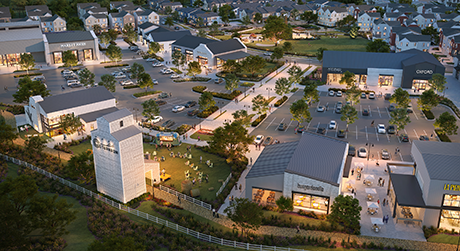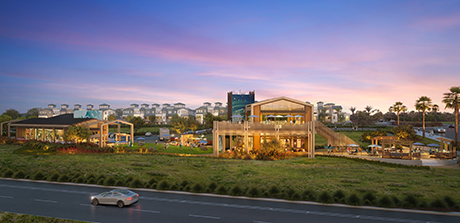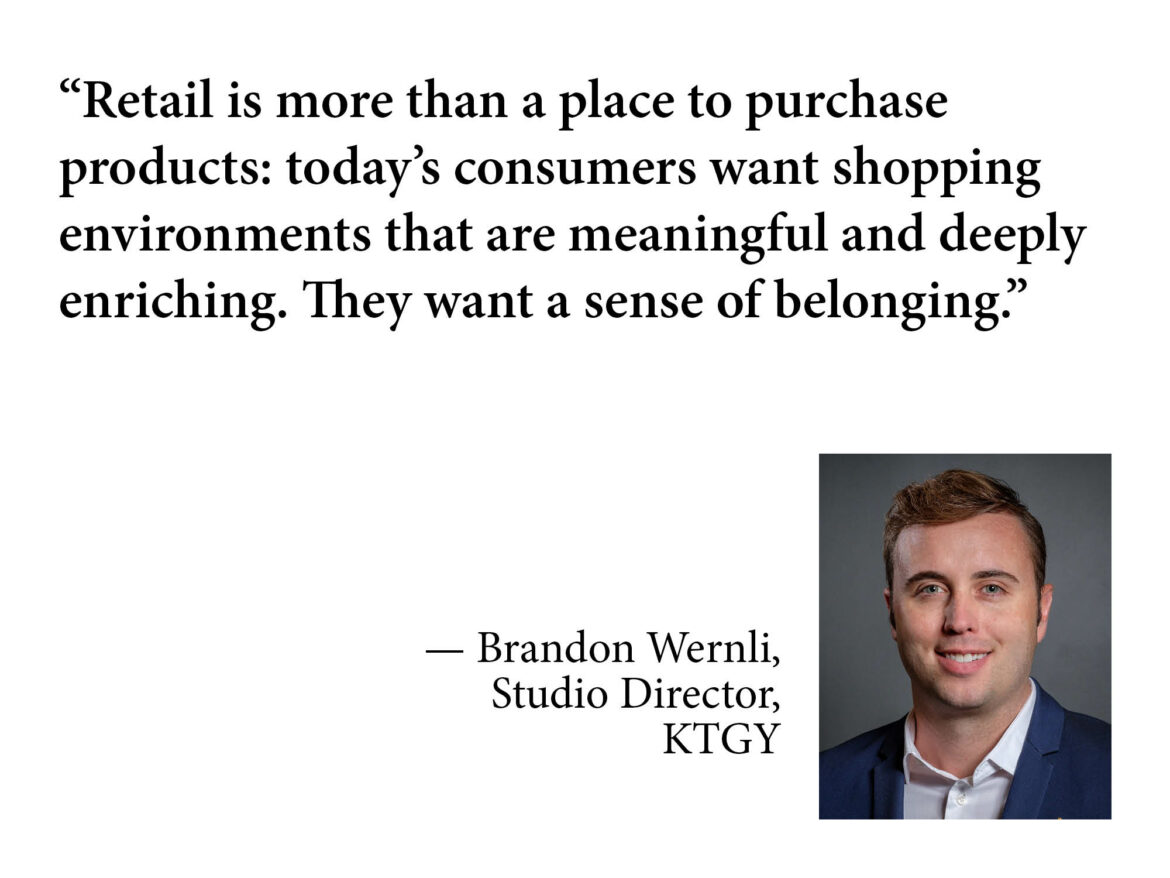By Brandon Wernli, studio director at KTGY
The time we live in is marked by a profound transformation in how people work, live and connect with each other. Since 2020, shopping centers, regional malls, commercial plazas and lifestyle districts have reasserted themselves as more than places of financial transaction; they are a social necessity.
We are living through a societal shift away from the postwar model of expansive single-family homes and isolated retail strips. Reversing decades of suburban sprawl, the residences built today are reducing lot sizes and favoring connectedness over seclusion. Attainability, flexible work patterns, changing consumer preferences and subsequent population shifts have caused residential developers to rethink what people want from their homes.
Apartments and mixed-use developments have become more popular as single-family housing remains expensive, and in choosing multifamily living, residents are prioritizing both walkability and social connection. The way people engage is being reimagined. With smaller residential spaces comes the need for larger shared experiences. This is where retail steps in. Retail is more than a place to purchase products: today’s consumers want shopping environments that are meaningful and deeply enriching. They want a sense of belonging.

The Future of Retail
Real-world strategies for creating successful mixed-use environments combine community engagement, innovative design solutions, placemaking principles and economic pragmatism to ensure developments meaningfully connect people and places.
Thriving developments grow from understanding local context. At KTGY, we begin each project by engaging stakeholders and gathering community input to align both the public’s and the developer’s visions. Our strategies include crafting flexible master plans that phase development sustainably over time, integrating retail and residential uses to foster walkability and social interaction and designing public spaces that encourage gathering. This design approach also applies to reimagining underperforming retail and adaptive reuse sites to create destinations that serve both economic and social needs. By orchestrating collaboration among architects, planners, landscape designers and retail experts from project inception, it’s possible to deliver livable, connected environments where retail acts as the anchor for community identity and belonging.
Evolving demand is shaped by lifestyle changes in consumer demographics and by constantly updating cultural influences. Social media platforms, particularly those dominated by visual content like Instagram and TikTok, have raised expectations. Consumers expect a retail environment that is both experience-driven and share-worthy. Culinary diversity, curated boutiques, artisan pop-ups and immersive digital integrations are the types of key experiences that are becoming baseline expectations, especially for newer generations of shoppers. Retail needs to evolve to offer transformation, where everyday spaces and small purchases become something to celebrate.
Despite predictions to the contrary, physical retail has adapted quite well to the rise of e-commerce and online buying habits. Humans are social creatures, and we have a need for immediacy. We crave physical interaction and discovery, as well as a tangible connection to the communities around us. Whether in urban centers or suburban developments, people still want to shop close to home. They want to walk to get ice cream, meet friends at a local cafe or browse through a farmers’ market on the weekend. Retail shouldn’t be an afterthought. It is a vital part of the foundation holding neighborhoods together.
The stickiness of the 15-minute city concept emphasizes the need for personal connection. In this vision of urban life, all necessities, including workspace, parks, healthcare, schools and shopping, are accessible within a 15-minute walk. This model prioritizes convenience, and it fosters sustainability and inclusion. Retail plays multiple roles as an economic engine and cultural and social hub. When done right, retail builds community and provides a real sense of place and belonging.
For developers and retailers, this evolution represents a remarkable opportunity. Success in the coming years will require a paradigm shift where retail is embedded as a core feature of new communities. Developers must plan for retail spaces that encourage gathering and exploration. The most successful retail environments are those that reflect and respond to how people live. Mixed-use developments that reflect a community’s identity, pedestrian promenades and walking spaces that encourage foot traffic and the adaptive reuse of historic buildings, uniting the past and present, are examples of how retail can be both functional and meaningful. Retailers that offer locally made products and support community events further strengthen the sense of belonging.

Community Fit
Thriving retail reflects a thriving community. When retail spaces are thoughtfully integrated into the daily lives of residents, these spaces provide more than commerce. They provide connections at a time where people are feeling increasingly uprooted from their surroundings and disconnected from each other.
As demographic and housing trends continue to redefine how we engage with urban space, retail is evolving from a transactional place into a connection space. Retail is filling the need for a “third place,” after home and work, where people can find joy and connection. Retail is a community anchor: the shared living room, the neighborhood square, the hub of local culture, etc. It is, increasingly, the catalyst for belonging.
This article was written in conjunction with KTGY, a content partner of Shopping Center Business.


